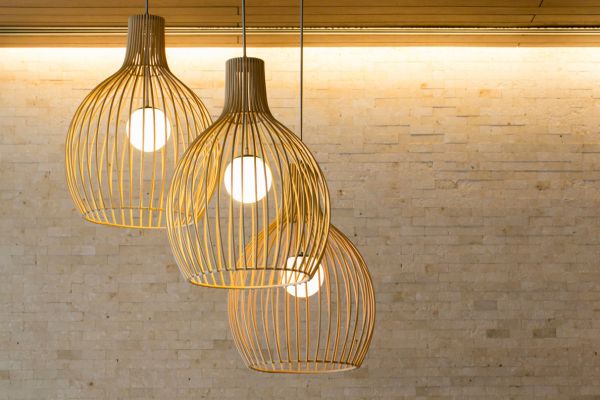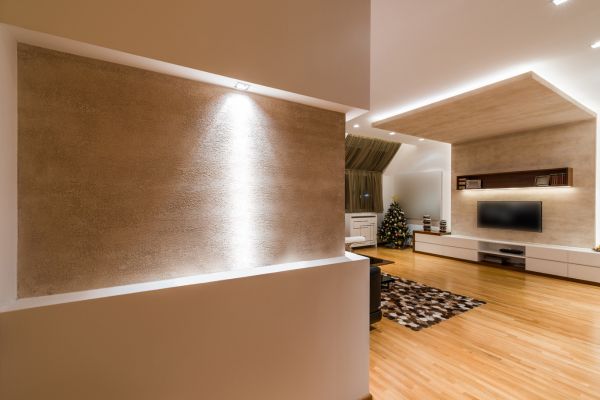Determining how many lamps in living room spaces can significantly impact both the ambiance and functionality of the area. The right number of lamps can create a warm, inviting atmosphere while ensuring adequate lighting for various activities. Factors such as room size, natural light availability, and personal aesthetic preferences all play a crucial role in this decision. By carefully considering these elements, homeowners can enhance their living rooms with the perfect balance of light, achieving both style and practicality. This guide will explore the optimal number of lamp needed to illuminate living rooms effectively.
Can I Mix And Match Different Types Of Lamps In The Same Room?
Mixing and matching different types of lamp in the same room can add depth and visual interest to your living space. Combining floor lamp, table lamps, and perhaps even pendant lights or wall sconces can create layers of light that enhance both functionality and ambiance. Each type of lamp serves a unique purpose, from providing task lighting for reading or working to casting a soft glow for relaxation. By mixing different styles and sizes of lamps, you can create a dynamic light scheme that complements your decor while meeting your lighting needs.
Assessing The Size Of Your Living Room
The size of your living room is a crucial factor to consider when determining how many lamps are needed. A larger room may require multiple light sources to ensure even illumination across the space. In such cases, a combination of floor lamps, table lamp, and overhead lighting can help distribute light effectively. Conversely, a smaller living room may only need one or two well-placed lamp to provide sufficient light. Consider the dimensions of your room and how its layout affects the distribution of light when deciding on the number and placement of lamp.
Determining The Purpose Of Lighting
Understanding the purpose of lighting in your living room is essential for choosing the right number and type of lamps. Consider how you use the space—whether it’s for entertaining guests, watching television, reading, or simply relaxing. Task lighting, such as a reading lamp by a cozy armchair or a pendant light over a dining table, provides focused illumination for specific activities. Ambient light, on the other hand, creates a warm and inviting atmosphere throughout the room. By identifying the primary functions of your living room, you can tailor your lighting design to suit your lifestyle and preferences.
Understanding Different Types Of Lamps
1. Floor Lamps

Floor lamps are tall, freestanding lighting fixtures that typically stand on the floor and have a base, a stand, and a lampshade. They are versatile additions to any room, providing both ambient and task light. Floor lamp come in various styles, ranging from sleek and modern designs to more traditional or decorative options. They are often used to illuminate specific areas or to add a layer of ambient light to the room. Floor lamp are especially useful in living rooms, bedrooms, and home offices.
2. Table Lamps

Table lamps For Living Room are smaller light fixtures designed to sit on a table, desk, or any flat surface. They consist of a base, a stand, and a lampshade, similar to floor lamps but on a smaller scale. Table lamp are popular for providing task lighting for activities such as reading or working, as well as for adding decorative accents to a room. They come in various sizes, shapes, and styles, making them versatile options for different spaces and decor schemes.
3. Task Lamps

Task lamps, also known as desk lamp or work lamp, are designed to provide focused lighting for specific tasks such as reading, writing, or crafting. They often feature adjustable arms or shades that can be positioned to direct light exactly where it’s needed. Task lamps come in various styles and sizes, from sleek and minimalist designs to more elaborate or decorative options. They are commonly used on desks, bedside tables, or in home offices to provide functional light for various activities.
4. Accent Lamps

Accent lamps are decorative lighting fixtures that are used to add visual interest and ambiance to a room. Unlike task or ambient light, which focuses on illuminating the entire space, accent lamp are designed to highlight specific objects, architectural features, or areas of interest. They come in a wide range of styles, shapes, and sizes, from small and subtle to bold and statement-making. Accent lamp can be placed on shelves, mantels, or side tables to create a focal point or to enhance the overall aesthetic of a room.
Creating Layers Of Light
1. Ambient Lighting

Ambient light serves as the primary source of illumination in a room, providing overall brightness. And ensuring that the space feels inviting and comfortable. This type of lighting is typically achieved through overhead fixtures such as ceiling lights, chandeliers, or recessed lighting. Ambient light helps to evenly distribute light throughout the room. Reducing harsh shadows and creating a pleasant atmosphere for everyday activities and gatherings.
2. Task Lighting

Task lighting is focused illumination that is directed to specific areas or tasks. Providing the brightness needed for activities such as reading, cooking, or working. This type of lighting is often achieved with fixtures such as table lamp, floor lamp, or pendant lights positioned near workspaces or seating areas. Task light should be adjustable and positioned to minimize glare and shadows, allowing for comfortable and efficient task performance without straining the eyes.
3. Accent Lighting

Accent lighting is used to highlight or draw attention to specific objects, architectural features, or areas of interest within a room. It adds depth and visual interest by creating contrast and focal points. Accent lighting fixtures can include wall sconces, track lighting, or directional spotlights, as well as smaller decorative lamp such as accent table lamps. By strategically placing accent lighting, you can enhance the aesthetics of your space and create a welcoming ambiance.
The Number Of Lamps Needed
Determining the number of lamps needed for your living room depends on various factors such as room size, layout, natural light availability, and personal preferences. Larger rooms may require multiple lamps to ensure even illumination. While smaller spaces may only need one or two strategically placed fixtures. Assessing the purpose of lighting in your living room, whether it’s for task-oriented activities or creating ambiance, will also influence the number of lamp required. By carefully considering these factors, you can determine the optimal number of lamp to achieve the desired light effect in your living room.
Can I Mix And Match Different Types Of Lamps In The Same Room?
Yes, mixing and matching different types of lamp in the same room can be an effective way to create layers of light and enhance the overall ambiance. Combining floor lamp, table lamps, task lamp, and accent lamp can provide both functionality and visual interest. Each type of lamp serves a unique purpose, from providing task lighting for reading or working to adding decorative accents. And highlighting specific areas or objects. By mixing different styles, sizes, and types of lamp, you can create a dynamic and versatile lighting scheme that meets your lighting needs while complementing your interior decor.
How Do I Determine The Appropriate Size Of Lamps For My Living Room?
When determining the appropriate size of lamps for your living room, consider the scale of the room. The height of the ceilings, and the size of the furniture. Taller floor lamp may be more suitable for rooms with high ceilings. While shorter table lamp may be better suited for smaller spaces or areas with lower ceilings. Additionally, ensure that the proportion of the lamp complements the scale of the furniture it accompanies. A large sofa, for example, may require a taller or more substantial lamp to balance its size. While a smaller side table may benefit from a more petite lamp. Ultimately, choose lamp that provide adequate illumination without overpowering the space or obstructing views.
Conclusion
The number of lamps needed for your living room, as well as the types and sizes of lamps, should be carefully considered to achieve. The desired lighting effect and enhance the overall ambiance of the space. By assessing factors such as room size, layout, purpose of lighting, and personal preferences. You can create a well-lit and inviting living room that meets your needs and reflects your unique style. Mixing and matching different types of lamp can add depth and versatility to your lighting scheme. Allowing you to create a dynamic and visually appealing environment.
